
Extend Your Heavy Equipment’s Life With Our Ultimate Guide to Maintenance Hour Intervals
Written by Luis Montes
Updated On May 04, 2025


Written by Luis Montes
Updated On May 04, 2025

Whether you’re a heavy equipment owner or fleet manager or work as an operator, these heavy equipment maintenance guidelines will show you how to keep your heavy equipment in peak condition.
We’ll focus on preventive maintenance for some of the most popular pieces of equipment, such as mini excavators, skid steers, and compact track loaders. The benefits of preventive maintenance for your construction equipment are:
The following charts are our recommended schedules, designed from a combination of models from the most popular brands in the industry, to offer you a thorough and reliable maintenance guide, regardless of the mini excavator, skid steer, or compact track loader you’re operating.
However, don’t limit yourself to a heavy machinery maintenance manual. Mind anything unusual about your heavy equipment’s performance, and cross-reference this list to avoid costly breakdowns.
Be aware of signs such as:

From checking fluid levels to replacing filters, this excavator maintenance schedule covers all the essential maintenance tasks to carry out on your mini excavator according to the hour meter.


Do you need a new set of tracks? Check out our rubber tracks to find the right set for your construction machines. We’ve got you covered!
The following skid steer maintenance checklist will help you keep your wheeled skid steer loader running smoothly by identifying the necessary tasks.

Whether you use your CTL for construction, landscaping, or any other purpose, this checklist will help you stay on top of the necessary maintenance tasks, from inspecting tracks to greasing pivot points.


Do you need heavy equipment tools?
Check out our heavy equipment tools to find the right tools for your construction machines. We got you covered!
You can do maintenance tasks using wrenches, drivers, and ratchets. Our article “Top Heavy Equipment Tools” covers what we consider to be the basic tools an apprentice needs to start working as a heavy-duty mechanic.
For some of the tasks mentioned here, the only “specialized” tools you’ll need are an air compressor, a pressure washer, and a grease gun. To ease the greasing process, we recommend a grease gun with the following:


Besides the above heavy equipment maintenance schedule, we want to share other tips and best practices based on our experience, which may be hard to find in the manuals or not present.
As tempting as it may be to skip reading the manual and go straight into the cabin, don’t do it. Get to know the limitations of your heavy equipment, and If you aren’t behind the controls, make sure the operator has qualified operator training.
Properly operating your construction machine is just as important as storing it at the end of the shift. So, when possible, park your heavy equipment in sheds to protect it from the weather, which reduces maintenance in the long run.

Although the whole machine needs maintenance, we recommend focusing on the undercarriage. The undercarriage represents a considerable portion of the equipment’s purchase price. Keep an eye on the following:

If you need undercarriage parts, you’ll need to check out our heavy equipment undercariage parts to find the right part for your heavy equipment.
If your heavy equipment moves on wheels rather than tracks, rotate the tires periodically (front to rear and vice-versa) to extend their life span. Usually, one set of tires wears faster than the other.
Although attachments may not be considered part of the main item, a loose attachment can damage the equipment itself, leading to costly repairs and maintenance. Double-check that you set up attachments correctly.

Fluids are vital for any piece of equipment and must match the information in the operator’s manual. Avoid mixing different types of the same fluid, mainly oils and coolants.

Lastly, don’t rely only on your memory and the hour meter to keep track of the maintenance of your construction machine. Keep historical data using any maintenance schedule software (CMMS) like UpKeep and Fiix or our inspection checklist.
In countries with four seasons, you must be extra aware of maintenance.

We’ll focus on extreme temperatures in the summer and winter.
Right off the bat, schedule work outside peak hours. The additional heat will make tires wear much faster due to increased pressure, while brakes will lose friction due to an effect called brake fade. James E. Duffy explains this in his book “Modern Automotive Technology.“
Extreme hot temperatures also affect fluids.
Use an engine oil with a higher viscosity rating. Thicker oils provide more protection against wear and tear and better lubrication during high-temperature operations. Check the owner’s manual or consult a qualified mechanic to determine the appropriate oil viscosity.
In an interview on The Heavy Duty Parts Report Podcast, Brad Moss, Product Manager at BBB Industries, recommends to those operating heavy equipment with turbocharger technology to let the engine idle for 2 minutes before shutting it down to prevent oil cocking at the shaft and bearings.
Check and top off the coolant expansion reservoir regularly and fill in the fuel and DEF tanks daily.
Lastly, roll the windows up when using the HVAC to keep the cabin cool and prevent the air conditioner from working harder.
Just like hot temperatures affect tires and fluids, so does extreme cold.
To choose the right engine oil, grease for the lubrication points, brake fluid, and fuel refer to the operator’s manual or manufacturer’s recommendations.
By the way, #1 diesel performs better than #2 in winter because of its lower viscosity and the lack of paraffin in the chemical mix, making it less prone to gel in freezing temperatures.
Cold weather decreases tire pressure, so check the tires’ PSI regularly. Under-inflated tires reduce fuel economy and cause uneven wear, affecting traction, steering, and alignment.
Choosing the right track pattern is especially important to ensure optimal performance, safety, and durability. The wrong track pattern will cause unnecessary wear and tear on the tracks, undercarriage, and other components, leading to costly repairs and replacements.
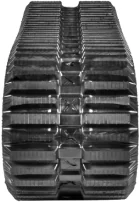
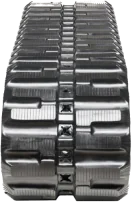
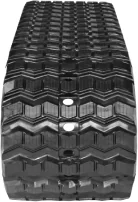
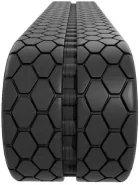
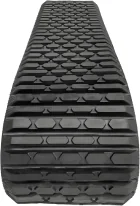
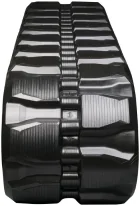
Cleaning your machine regularly or daily becomes more important during winter because the accumulated mud, snow, muck, or trash will get frozen hard.

Crank up those machines with less operation frequency during winter and put them through a basic series of movements and functions.
For environments reaching -40°F or -40°C, use an engine block heater to keep the engine warm rather than leaving the machine idling. The reason is that idling should be at 1,100 to 1,200 rpm, which leads to excessive wear and tear on the engine components.
If you plan on storing your equipment for the winter, there are things you can do to guarantee your machine will be operational by the end of the season:
Regular maintenance isn’t only about changing fluids, filters, and parts. Proper operation, safe storage, and best practices will reduce repair costs and prolong the lifespan of your construction machine.
Remember, this machinery maintenance schedule is a general guide. Your owner or manufacturer manual is the best source of information about the right fluids and replacement parts for your piece of equipment.
Share this post with colleagues and friends to help them succeed in construction and landscaping projects.